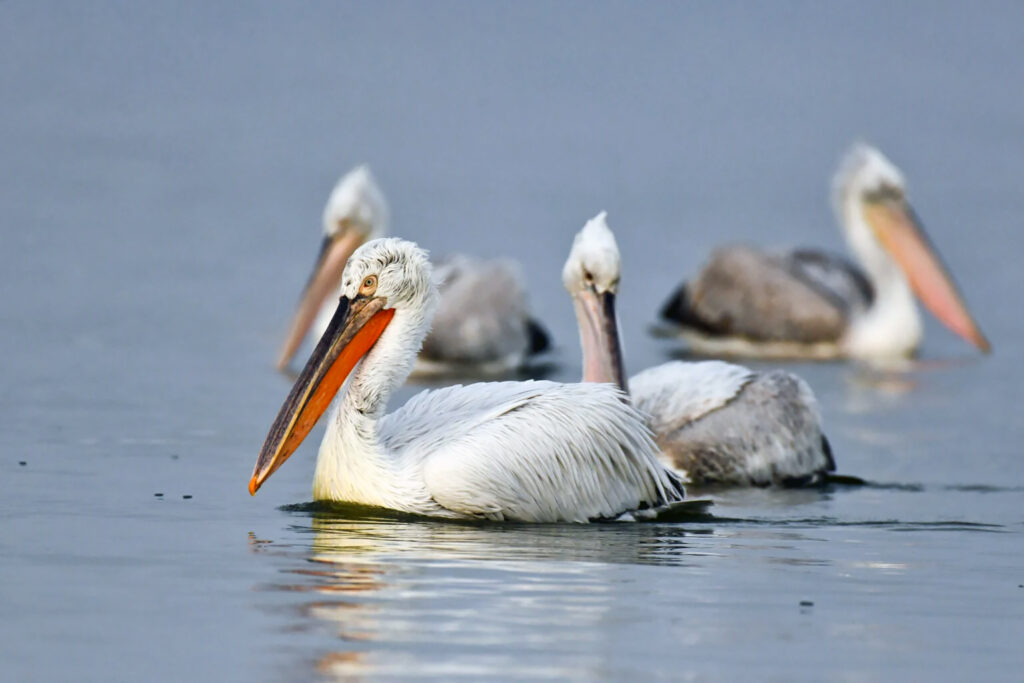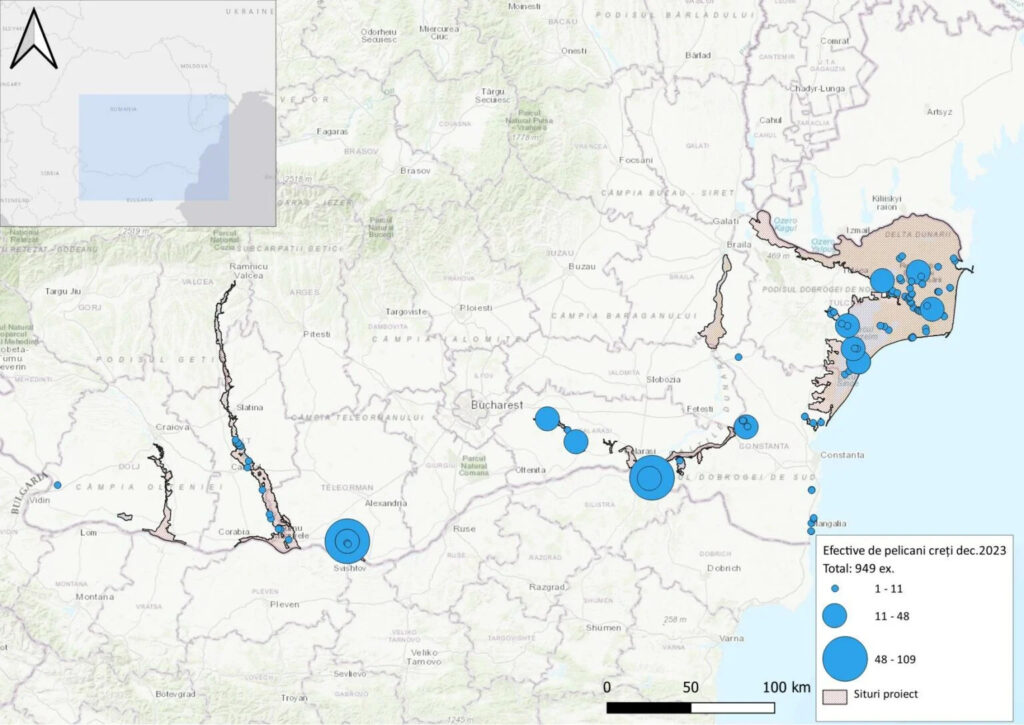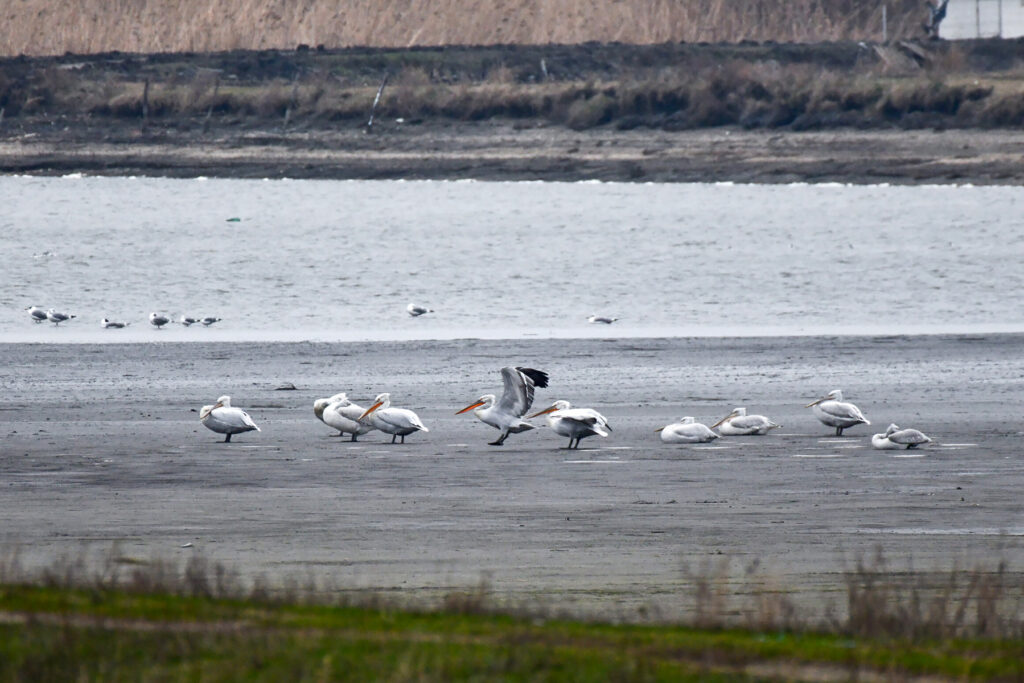The winter monitoring of Dalmatian pelicans occurred in December as part of the Pelican Way of LIFE initiative. Coordinated by the Romanian Ornithological Society, the monitoring in Romania engaged 13 teams, covering the wintering areas utilized by Dalmatian pelicans.

In the December 2023 census, a total of 949 Dalmatian pelicans (Pelecanus crispus) were counted across Romania’s distribution area. Among them, 704 were adults, while 245 were immature individuals from various age categories. This count represents the highest number of Dalmatian Pelicans recorded in Romania during winter monitoring since the inception of the Pelican Way of LIFE initiative. As expected, the highest numbers were observed in the areas of large lakes along the Danube, such as Suhaia, Bugeac, and Oltina. However, nearly half of the total recorded individuals (404 specimens) were observed within the territory of the Danube Delta Biosphere Reserve, a significant increase compared to previous years. The monitored areas encompassed nearly the entire distribution range of the species.

“We aimed to achieve the best possible coverage and obtain the most representative count of pelican flocks wintering in our country. Throughout the monitoring period, we encountered typical winter conditions, including less favorable weather, low temperatures, and relatively strong winds. While these conditions posed some challenges to our monitoring efforts, they also limited the pelicans’ mobility, making the counting process more feasible,” explained biologist Sebastian Bugariu from SOR.
The number of Dalmatian pelicans recorded in Romania marked the highest count in the past 5 years. When combined with the Dalmatian pelicans counted in Bulgaria (644 specimens), the total count remains consistent with previous years. This stability is encouraging, especially considering the significant impact of the avian flu episode in 2022, which notably affected the population size.

Various areas were monitored, including the Mostiștei Valley, the Iezer Călărași area, the lower Olt Valley, the point of confluence of the Olt with the Danube, Bistreț, the Danube Delta, the lagoon area, and sites in southwest Dobrogea (Bugeac, Oltina, Dunăreni, Vederoasa), lakes in central Dobrogea, and the Black Sea coast. Expeditions in the Danube Delta and the lagoon area received support from the environmental agents of the Danube Delta Biosphere Reserve Administration (ARBDD), who are initiative partners.

Efforts were made to ensure coverage without the risk of duplicate counts. In total, 13 teams participated, with 6 teams composed of SOR observers accompanied by ARBDD staff operating within the Danube Delta Biosphere Reserve.
Long-term monitoring of Dalmatian pelicans is crucial for observing population trends and dynamics, detecting potential changes, and developing measures to ensure the conservation and protection of the species.